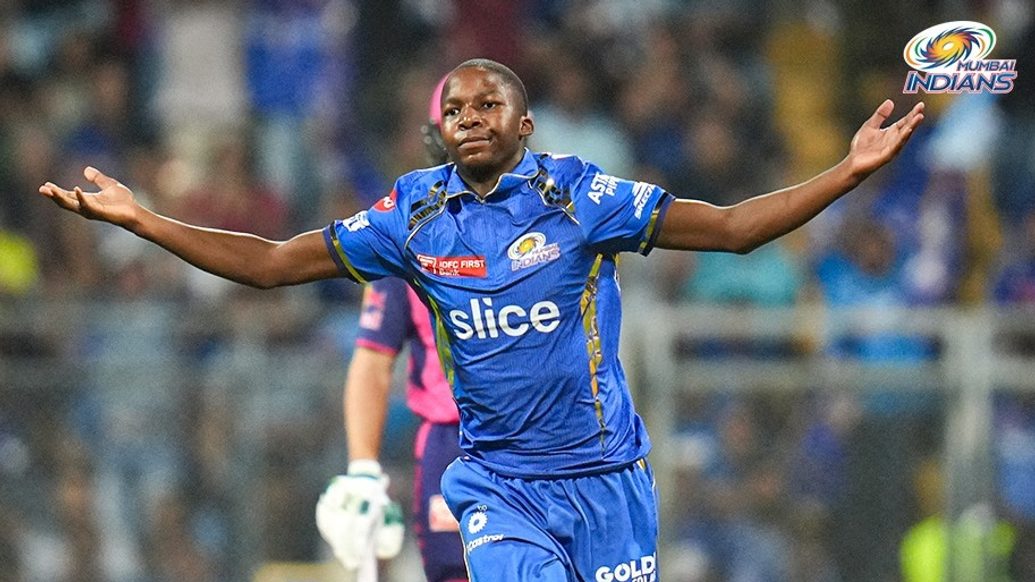In the high-stakes world of professional cricket, where every sprint, dive, and powerful delivery can define a career, meticulous player health management is paramount. Yet, even with the most advanced diagnostics and experienced medical teams, mysteries can emerge. Such is the recent tale of South African cricket`s rising star, Kwena Maphaka, whose hamstring injury has unexpectedly sidelined him despite an initial “clean scan” that seemingly gave him the all-clear. It`s a narrative that raises eyebrows, questions established protocols, and underscores the unpredictable nature of the human body under intense athletic duress.
The initial scene unfolded during a first-class encounter between Western Province and the Lions at Newlands. Maphaka, a pace bowler with immense promise, felt a disconcerting twinge in his hamstring during the first innings, curtailing his spell after just 5.5 overs. A cautious retreat from the field seemed a prudent measure, allowing the young bowler to rest as the Lions amassed a substantial total.
What followed, however, was a classic example of conflicting information in the sporting arena. Whispers from the Western Province camp suggested Maphaka was out of contention, while the Lions` assessment painted a more optimistic picture: “He`s fine.” In an effort to ascertain his fitness, Maphaka underwent what was termed a “lunchtime test” on a practice pitch, simulating his bowling action at various intensities. He seemingly passed this informal examination without issue, bolstering confidence in his readiness.
Armed with this apparent clean bill of health, and crucially, an initial scan report from the first innings that had also returned clear, Maphaka was back on the field for the second innings. He shared the new ball, demonstrating his characteristic verve, and remarkably, captured three wickets in what proved to be the final overs of the match as the Lions secured a dominant victory. All appeared to be well, a testament to his resilience and the medical team`s “successful” management of his condition.
But as is often the case, the full truth awaited a more thorough examination. A follow-up MRI scan conducted on Monday told a different, more somber story. The initial “all clear” was unequivocally overturned. A Grade 1-2 hamstring strain was diagnosed, necessitating four weeks of rehabilitation. The irony was palpable: a player seemingly fit enough to take three wickets after an initial twinge and a clear scan was, in fact, injured, highlighting a diagnostic gap that many medical professionals grapple with.
The implications are immediate and significant for the 19-year-old. Maphaka will now miss South Africa`s T20 International against Namibia in Windhoek and a crucial six-match white-ball series in Pakistan, comprising three T20Is and three ODIs. For a young cricketer on the cusp of cementing his place in the national squad, this enforced break comes at a critical juncture, temporarily halting his international progression. Ottneil Baartman has been drafted in for the T20Is, with Lizaad Williams joining the ODI contingent as replacements.
The question naturally arises: why was Maphaka risked in the second innings if there was any doubt? Jono Leaf-Wright, the Lions chief executive, offered a clear explanation: “He had a scan during the first innings which came back clear. The physio and medical team managed him and got him ready to bowl in the second innings.” This highlights the inherent trust placed in medical assessments and the delicate balance between a player`s desire to perform and the imperative of long-term welfare. With a dressing room boasting the likes of Russell Domingo, Hashim Amla, and Allan Donald, the decision to play Maphaka was undoubtedly made with considerable experience and professional opinion. Yet, even the most experienced hands and the most advanced technology can, occasionally, yield an incomplete picture, demonstrating the inherent complexities of human physiology.
In the unforgiving light of hindsight – that irritatingly precise science that offers perfect clarity only after the fact – one might ponder if a more conservative approach would have been beneficial. Maphaka`s match-winning contribution was undeniable, but the ultimate price appears to be a setback in his burgeoning international career. For a talent as precocious as Maphaka, who already boasts a respectable, albeit early, international record of two Tests, three ODIs, and 13 T20Is, careful management isn`t just a best practice; it`s a necessity. Today`s seemingly minor twinge, if not meticulously handled, can indeed evolve into tomorrow`s more significant injury, potentially curtailing a career that promises much.
As Kwena Maphaka embarks on his rehabilitation, the incident serves as a stark reminder that in elite sports, the human element, with all its complexities and occasional ambiguities, often triumphs over the seemingly definitive pronouncements of machines. Here`s hoping his recovery is swift and complete, and that this experience serves as a valuable, albeit painful, lesson in the nuanced art of athlete welfare for all involved.

